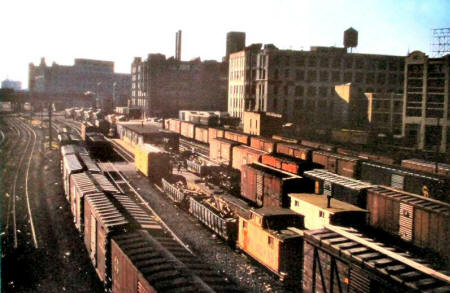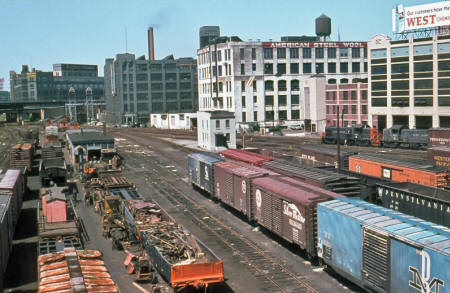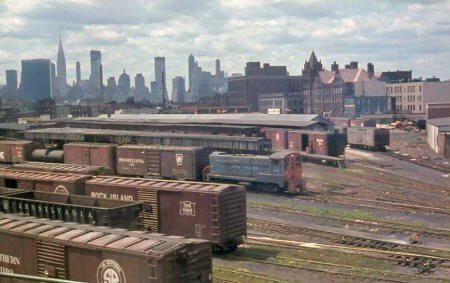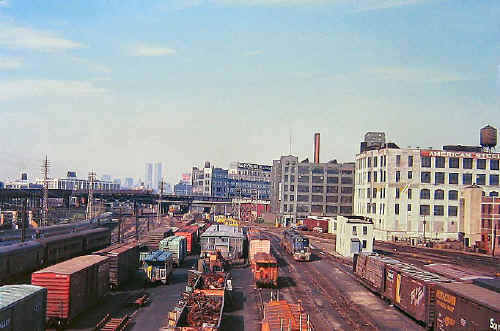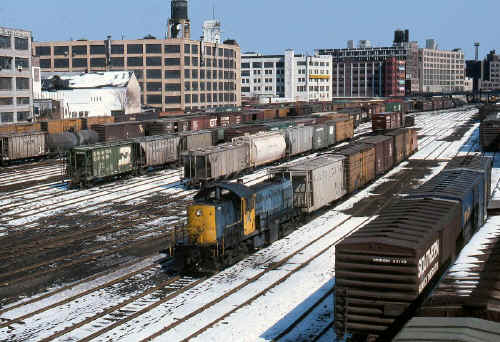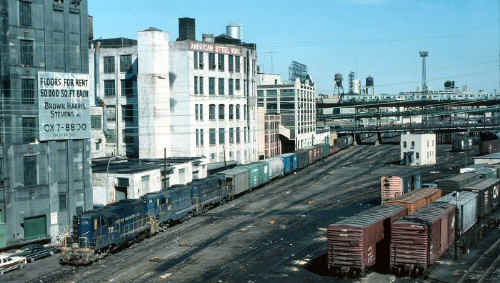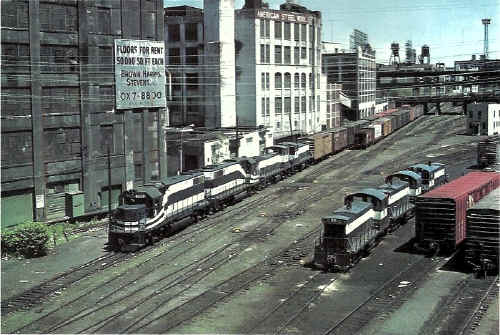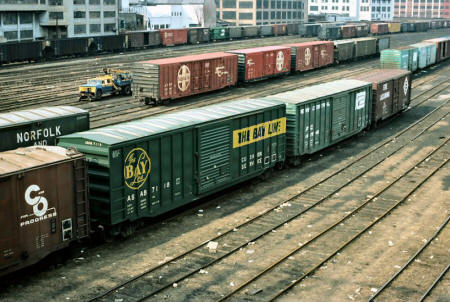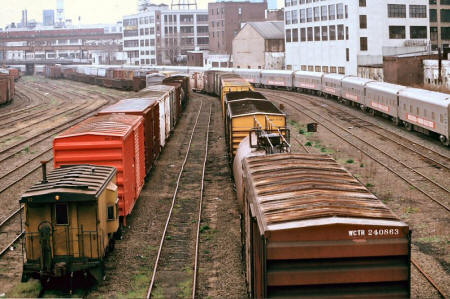
Entrance
to Yard A, View E 11th St. overpass
Archive: Henry Wagner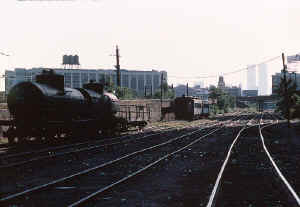
Yard A view W toward 21st St.
overpass at "8th street Hill." Mallon Co. siding at right 1984 -
LIRR 1909 MOW series #800-802 tank cars
10/12/84 Photos: Rudy Schubert
Coach MP54A
#1632 Combine MPB54 ex-#1398 than W6 moved to Terryville, NY in Tuscan
repaint as Visitor Center
|
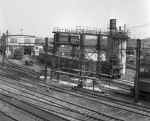
PRR Sunnyside Engine Sanding Facility
c.1958
Dave Keller Archive

Sunnyside Engine Facility 1954

Sunnyside Engine Facility c. 1980 Photo:
Bob Redden
|

Sunshine Biscuits Bldg.

LIRR #448 1966 in front of
Sunshine Biscuit
Archive: Dave Keller
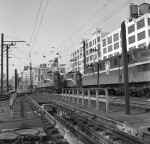
PRR GG1s Sunnyside c.1958

Location of above photo
Map/Info: Steve Lynch
|
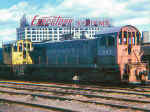
LIRR #447 at Executone Systems
Photo: Tim Darnell
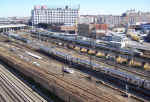
Amtrak Sunny Side view from City
Storage Bldg 11/07 Photo: Kevin Katta
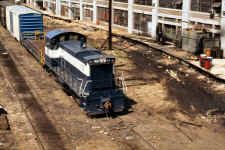
LIRR SW1001 #100 with Idler 4/11/77 Dave Keller archive

LIRR #100 Honeywell St.
05/21/77
Archive: Henry Wagner
|
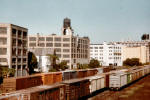
Yard A looking NE
c. 1980
Photo: Steven Lynch
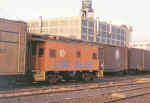
Yard A LIRR #C64 N22
Photo c. 1964+ Steve Hoskins

LIRR RS1 #462 in original colors LI City 2/26/1949 (Votava-Keller)
Note: West of Sexton
Foods/Speed Queen (Spot 18) LIRR 1966 maps
|
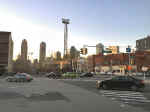
11th St. - Jackson Ave. view W 12/04/15
Floodlight remains from float docks Arch St. yard complex
Photo: Joseph Anastasio

LIRR Yard A View N from Honeywell Ave
ramp into yard c. 1980's
Photo: B. Myers
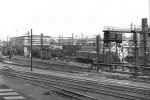
H10s, GG1, DD1 at sanding facility
c.1955
Dave Keller Archive
|
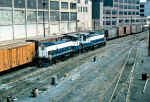
LIRR #154, #162 Honeywell St.
04/21/77
Archive: Henry Wagner
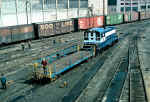
LIRR #106 Honeywell St. 05/16/77
Archive: Henry Wagner
|
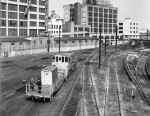
LIRR #460 Alco S-2 with Idler
Car c.1958
Archive: Dave Keller
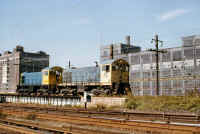
ALCO S1 #418, S2 #52 LI City
10/04/76 (Goldstein-Keller)
Sternberger Warehouse to the left,
Peter Mallon/ Bickford's
on the right.
|
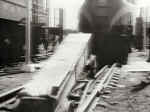
A "pig", "mule" or "barney" setup. (Note
1:)
The 2 rails between the running rails, are used by a railed pusher to shove
dead locos into shop area w/o catenary overhead.
No steam locos in Sunnyside what so ever.
Info: K. F. Groh
Dave Keller Archive
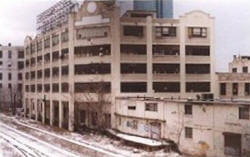
West Building and West Annex
(aka CN Building) Archive: Bill Myers
|

Sunnyside Engine Facility c. 1980's Photo: B. Myers
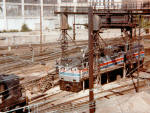
Sand Facilities Amtrak, ex-PRR c.1980
Photo: Steven Lynch
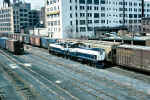
LIRR #162, #154 Honeywell
St.
5/21/1977
Archive: Henry Wagner
|
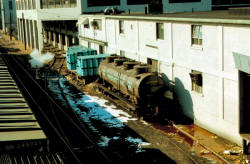
LI City "Stink Track" West Chemical 4 dome tank car GATX 3040 1/08/1974
Photo: Richard F. Makse |
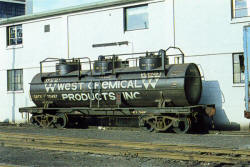
West Chemical 3 dome tank car GATX 70487 1/1972
Photo: Frank Szcahacz |

Ex-West Chemical Products - Weekend Boxcar Market Bldg view NW 8/14/1981
|
West Chemical made CN
disinfectant cleaner (Motto: "You can't spell clean without CN"). CN was
an iodine-containing product sort of like Betadine lotion, but it was
made with industrial-grade ingredients instead of pharmaceutical-grade.
As a result it smelled of iodine with a strong overtone of dead fish.
Stink track, indeed! Info: Albert Waltien |
|
WEST CHEMICAL:
During the summer of 1960, I
worked in the chemical laboratory of the West Chemical Company as
a technician. It was my first job and I was excited to be working in a
real lab. I made $65 a week and enjoyed Friday’s walk across Queens
Plaza to cash my check. I always wanted to be a chemist and I loved the
work.
The laboratories were housed in the long, thin second floor rectangle of
the flat roof building shown in the picture. The staff size was about 21
people: the laboratory director, managers, secretaries, chemists and a
small library. The lower story was a long internal shipping dock
connecting the main five story building with the single story plant. The
plant had several large blending kettles, probably 500 gallons each. The
larger building had at least one blending kettle of about 2000 gallons.
It also had presses for making Para dichlorobenzene, (PARA) blocks,
(urinal disinfectant) and other blending and bottling equipment.
The biological lab performed tests to evaluate the germ killing ability
of materials and products. It was the smaller of the two labs and needed
to be kept separate for hygienic reasons.
The chemical laboratory staff ran routine analysis on materials and
finished products such as moisture, water, solids and iodine content.
They also performed applied research including developing more durable
wax formulations or more stable emulsifier blends or selecting better
raw materials. Most people handled non-routine problems as they arose.
My job was to clean the glassware and equipment for all of them. One
person had the special job evaluating pesticide strengths using live
cockroaches.
His laboratory was housed in a separate, isolated, disused part of the
facility on the west side of West St and was termed the “roachatorium”,
denoted R in the picture, because cockroaches were raised for pesticide
evaluation. He had a large (12’ x 7’ x 6’) climate controlled room
dedicated to raising dozens of types of cockroaches. There were
thousands of sexually segregated cockroaches kept comfortable and well
fed, (dog biscuits were the preferred food) in high wall Petri dishes.
The company had a broad product line primarily catering to industrial
customers. The company made some products familiar to the public, of
which CN and possibly Pine-Sol are the most memorable. But, much of
their product line was for industrial customers. This included PARA, or
naphthalene blocks for urinal cleaning and deodorization, a range of
industrial strength detergents, floor wax, animal disinfectants using
iodine for farm and veterinary applications, hand cream for chapped and
rough skin, pesticide sprays, cleaning compounds for ship’s boilers are
a few. I believe they also did a fair amount of custom formulation to
meet customer’s specific requirements.
A fairly unique product was Isosan, an animal disinfectant used for farm
applications. Its main ingredient was suspended or solubilized iodine.
It was gentler on skin than chlorine based products, (Chlorox) but still
had significant germ killing properties.
Raw materials like alcohol, sulfonated hydrocarbons, and ammonia were
used in large amounts and could well have been received by tank car.
Smaller amounts of PARA, iodine, carnauba or Ouri-Curi wax, (the wax in
floor waxes) emulsifiers, disinfectants, oils, creams, etc. were
received in metal and fiber drums or bottles, which could also have been
received in boxcars.
I’m reasonably certain that the major ingredient in CN was comprised of
phenols and cresols obtained from coking and the subsequent processing
of the volatile coal tar. Coke was used in steel manufacturing and the
closest steel making region was Pennsylvania. The phenols were most
probably shipped to LI City by tank car resulting in some transfer
spillage at the siding. These materials have a very unique and sharp
odor, which would have been noticeable by the yard workers. Chlorinated
phenols or alkylated sulfonates may also have been used. The sources are
different, but the shipping method and odors would be the same.
Other finished products were shipped in 55 gallon drums gallon bottles
or smaller consumer specific containers. For local customers they were
shipped by truck. For more distant clientele or those purchasing large
amounts of product rail was preferred. The track siding at the rear of
the five story building served both boxcars and tank cars. Invariably
some of the material spilled from transfer hoses contributing to the
name “stink Track.”
In fairness to my first employer, West Chemical, I really think that a
contribution to the source of the “Stink Track” name was the van
Iderstine rendering plant. Rendering plant odors are unique, “heavier
and more sickening.” I was in Blissville once and smelled that
oppressive odor and never forgot it. I didn’t encounter it again for 25
years, until I came close to a similar plant in Indiana.
After Graduate school in the very early ‘70s I came back to visit my
parents. I swung by West Chemical, but it was abandoned. I hope this
summary helps fill in some details. I also give you permission to use
any of this material in your website or other documentation you feel may
be applicable.
Peter A. Pospisil - 2005 email to Nick Kalis
|
|
Note 1:
This looks like a “Barney”arrangement. A small car, the barney,
would run on those two inner rails, pulled by cables which you can see in
the middle of the track. When up on the level with the normal track, it
would stick up high enough to engage the coupler of an engine, which it could
them move along the track. When not in use, it would be rolled down into
the pit so as to clear normal movements. This sort of thing was used to
push hoppers up into the car dumpers that used to exist at
Jersey City
and
Weehawken
, and also was used at CNJ’s Ashley inclined plane, pushing car up the
mountain from Wilkes Barre.
I wasn’t
aware that such a thing had existed at Sunnyside. Probably was
originally put in when there was only 3rd rail, and DD-1 and L-5
locomotives. You wouldn’t want 3rd rail around a maintenance pit.
That whole engine house was designed to work on a production line basis, engines
moving through in one direction only. Using a steam switcher would have
been a nuisance as it would have had to run around using another track.
The barney avoided that and was probably electric powered, thus in keeping with
the modern standards PRR had in mind in the whole Penn Station complex.
Commentary: Henry Raudenbush 7/09/2008
|

C420 #229 lead on 4 Unit LI
City 8/12/1981
Archive: Dave Keller
|
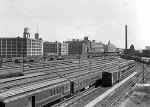
Queen's Blvd. (Diagonal St.) view NE 1922
NYS Collection
|
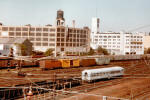
Queen's Blvd. view NE LIRR main in back
c.1980
Photo: Steven Lynch
|
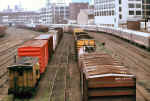
Yard A - Circus Train
Archive: Henry Wagner 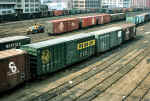
Yard A freight view NE
Archive: Henry Wagner
|

National Carbine c.1915

Brett Bldg. c. 1915 |
|
LI City - Harold Ave |

Sunnyside view NE towards R Tower and Harold Ave. US ARMY Trench Warfare Training - 1919 (Reuters-AMC)
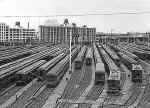
Honeywell Ave - Sunnyside Yard
view NE 1934 NYS Collection
|
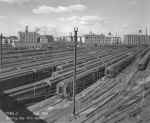
Sunnyside Yard View NE 4/1946
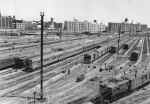
Sunnyside Yard View NE c.1953
|

PRR R Tower west of Harold Ave
Sunnyside Yard
View W 9/05/1960 (Faxon-Keller)
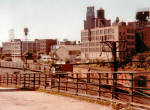
Harold Ave view NW driveway to REA
c.1980
Photo: Steven Lynch |
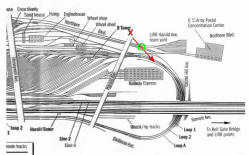
Sunnyside Yard - LIRR Harold Ave Team Yard
REA Facility 1956 Photo view right
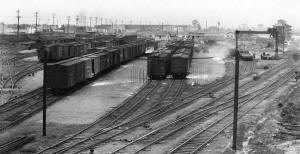
Harold Avenue Team Yard - View E 6/1922
Photo: Queens Chamber Commerce
Archive: Dave Keller
|
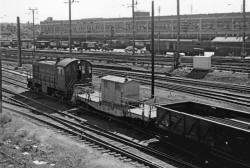
LIRR S2 #443 Reacher car #497882 at Harold Ave Team Yard - REA Facility
in the background - View SE
9/27/1951 Archive: Bob's Photos
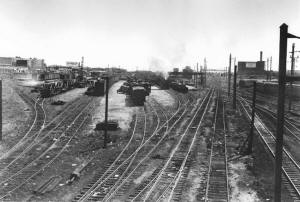
Harold Avenue Team Yard view E 1942
Photo: Fred Weber Archive: Mike Boland |
|
Arch Street Yard
|

Arch St. NY City rock salt piles c.1986 as Citicorp
Tower not yet built. Archive: Henry Wagner
|
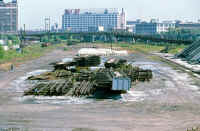
Arch St. Yard 9/29/1987 Photo: Edward Hand
|
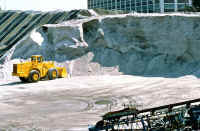
Arch St. Yard Rock Salt piles 9/29/1987 Photo: Edward Hand
|
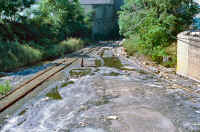
Arch St. Yard entrance 9/29/1987 Photo: Edward Hand
|
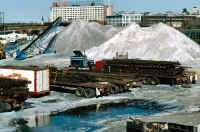
Arch St. Yard Rock salt piles
4/25/1988
Photo: Edward Hand
|
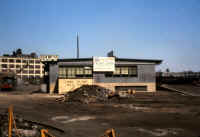
Arch St. Yard - Freight House
- Freight Accounting Office 5/21/1965 (Makse-Keller) |
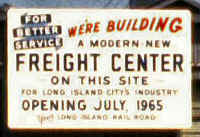
Arch St. Yard Freight House
zoomed sign 5/21/1965 (Makse-Keller)
|

Arch St. freight terminal view E 6/06/2009
|

Arch St. freight terminal and
house
|
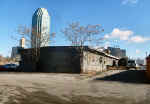
|
|
Arch St. freight house and terminal 12/17/2014
- Out of service as of 4/01/2015 Photos: Kevin
Wong unless noted.
|
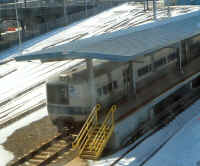
M-3 #9843 scrapped as the last
blue-striped unit Arch Street 2/14/2011
Photo: Kevin Wong |
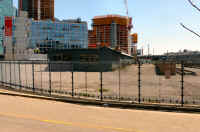
LI City Arch Street freight
terminal 7/30/2017
Photo: Kevin
Wong
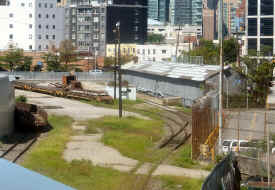
Arch Street Yard 8/19/2017
Photo/Archive: Kevin Wong
|
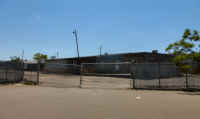
LI City Arch Street freight
terminal 7/30/2017 Photo: Kevin
Wong
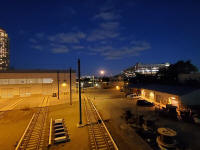
Arch St. from 21st St. LI City 9/13/2019 |
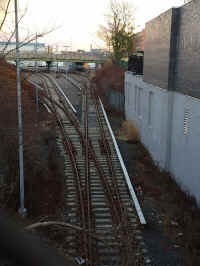
Rail
for new Arch St. shop View E at 21st St.
Photo Joseph Anastasio
|
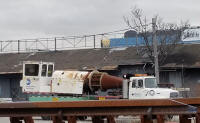
Arch Street freight station
MOW LIRR flatbed hauling Jet snow blower 1/27/2024
Photo/Archive: Kevin Wong |
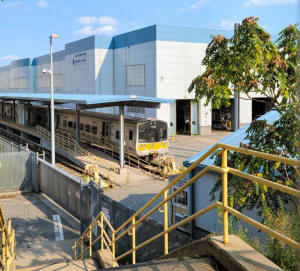
Arch St. yard - 9/13/2021
Photo/Archive: Alexander Martone |
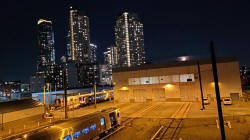
Arch St. Shops, LI City 2/06/2023
Photo/Archive: Kevin Katta |
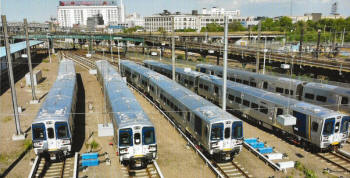
M9's Arch Street Shops, LI City
Photo: LIRR Road Foreman of Engines, Barry Johnson Archive:
LIST-NRHS |
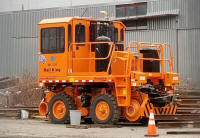
Arch Street freight station Rail King RK330 G6 Mobile Railcar Mover
Photo/Archive: Kevin Wong |

Arch Street freight station 1/27/2024
Photo/Archive: Kevin Wong |

Arch Street freight station 1/27/2024
Photo/Archive: Kevin Wong |

Arch Street Freight Station 4/04/2025 - Photo/Archive: Kevin Wong |
|
|
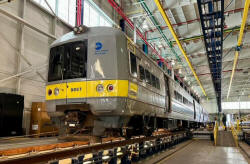
M9 pair 9857-9858 inside Arch Street for wheel truing
Photo/Archive: Barry Johnson |
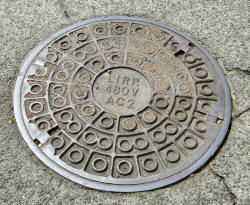
Arch Street manhole cover 7/12/2025 Photo/Archive: Chris Kokonis |
|
|
|
|
|
|
|
Dutch Kills Area |
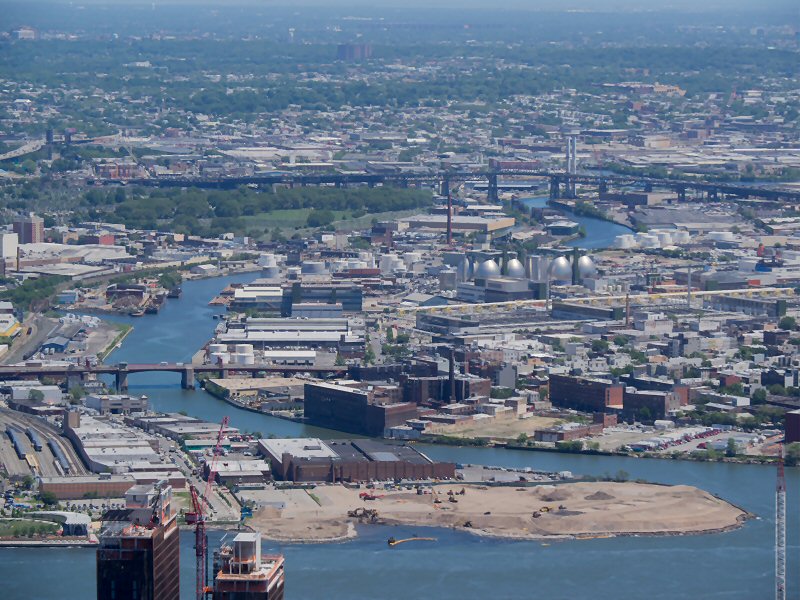
Newtown Creek view E - 6/10/2016 - Photo: Mario Burger |
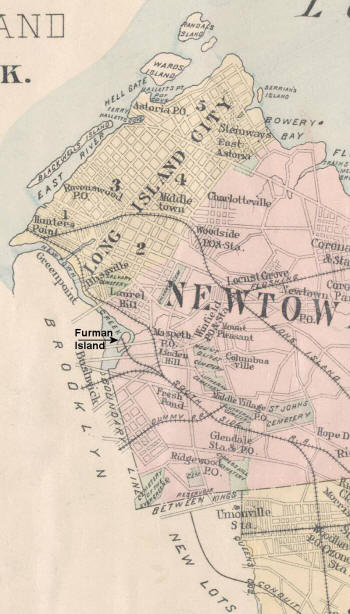
Newtown Creek - Furman's Island - Queens County map -1891 Archive: Don
Mawsey |
The arrival of oil refineries, tanneries,
fertilizer and acid manufacturers further degraded an island once known
as a countryside retreat.
I believe, but cannot confirm, it was a spur to the Nichol's Copper
Smelter & Refinery. At some point the small channel was filled in;
and later, Phelps - Dodge acquired the Nichol's smelter. Philip M.
Goldstein |

Newtown Creek 1860 illustrating the vast flat marshy
undeveloped area that became the Sunnyside LIRR yard complex

Dutch Kills Swingbridge
7/26/1997 Photo: Edward Hand |

Newtown Creek over 125 years later - 1985

Dutch Kills Swingbridge
view W c.2010 Photo: Henry Sommers |

Dutch Kills during construction

“DB Cabin Dutch Kills Swingbridge 12/1970 (opened: 10/1915 north
side of tracks - east of bridge) Collection: Dave Keller
|

Newtown Creek - w from the Kosciusko Bridge
Photo: Copyright
2000 Bernard Ente 
Dutch Kills leading into Newtown Creek -
southwest 2001
MORE DB Cabin |
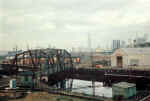
Dutch Kills view from the Montauk
Cutoff, 1960s. DB Cabin is visible, and what looks like a C420 on the
Lower Montauk Archive: Henry Wagner
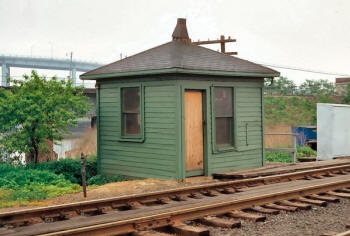
DB Cabin 5/16/1976 Archive:
Henry Wagner |
|
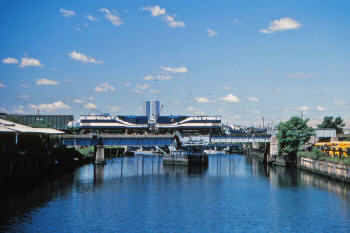
LI City, M Cabin bridge - LIRR #222-225 RF-15 westbound 7/1982
Photo/Archive: Jay Bendersky |
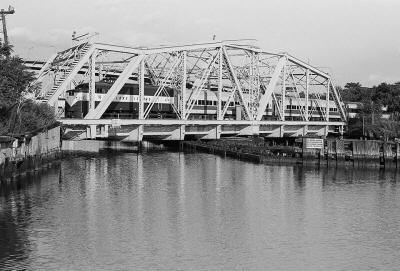
Dutch Kills Swingbridge - 'C' Secondary 1986
Photo/Archive: Frank Fiore |

DB Cabin and Dutch Kills Drawbridge - 5/1963
Photo/Archive: Richard F. Makse |
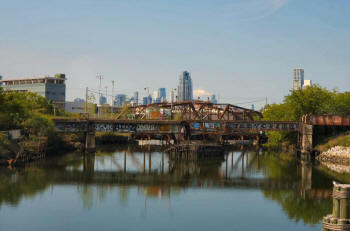
Dutch Kills 9/17/2022 Photo/Archive: Paul Pesante
How the scene here at Dutch Kills has changed in
40 years!
Jay Bendersky 1982 photo: C420 Centuries were on the LIRR, freight ran
across the Dutch Kills Drawbridge, the Dutch Kills Drawbridge didn't have a drop
of graffiti on it, Dutch Kills didn't look polluted, and the World Trade Center
proudly stood sentinel over Downtown Manhattan!
My photo from my morning bike ride this morning, 9/17/2022. C420 Centuries long
retired and scrapped, freights gone from the Montauk Cutoff and Dutch Kills
Drawbridge, replaced by hipster trespassers, the bridge itself is in shit shape
and chock full of graffiti, the waters polluted and sadly 21 years ago the World
Trade Center was taken from us and this view, and sadly not even the Freedom
Tower can be seen as "hipster towers" have eye sored and ruined the LI City,
Brooklyn waterfront, and great views of the NYC skyline!
Change...sigh...not always good! Paul Pesante
|
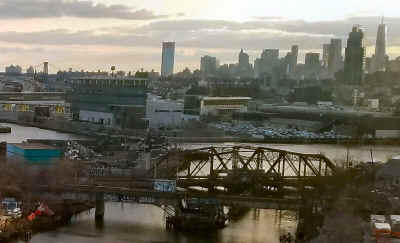
Newton Creek - Dutch Kills zoom on the
track block to Montauk Cut-off
View SW 4/10/2018
Photo/Archive: Restrict on the Hanger
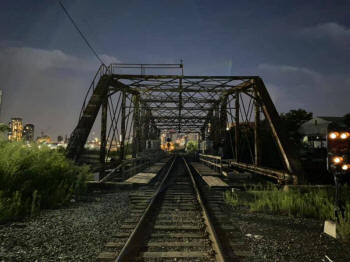
Dutch Kills Swingbridge - View W 8/2020
Archive: George Sekavec
|
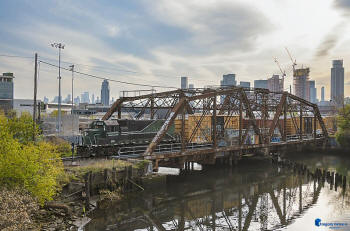
"Extra Over DB" - On the evening of May 5th, 2022, New York & Atlantic
Railway EMD GP38-2 268 is seen leading a "Film Extra" east over the
Dutchkills Bridge on the Lower Montauk in Long Island City, NY. Aside
from moving Long Island's freight, NYAR occasionally assists local
production companies with television and movie scenes that feature
freight trains in New York City. Photo/Archive: Greg Grice
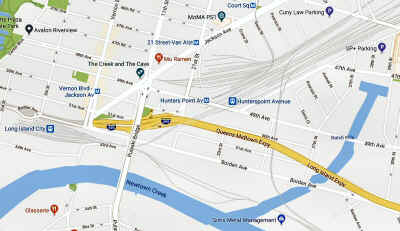
LI City -Newton Creek-Dutch
Kills Google 2018
|
|
Everything from the remains of Yard A to the
Swingbridge
(M Cabin) is out of service (OOS). The approach fills to the bridges from Yard A remains have been removed to make space for leads to Arch St Shop. The former cutoff trackage from the drawbridge to Bliss are now stubs used to store cars for Wheelspur yard. The
track block on the old cutoff is right past that WMX garbage car on the swing bridge.
|
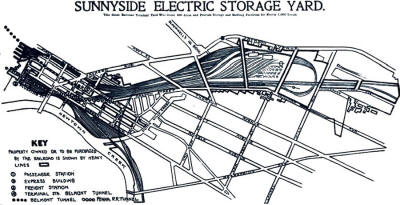

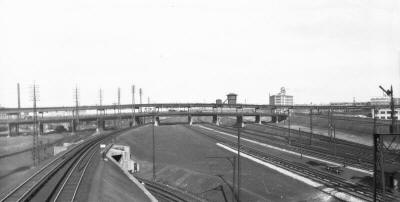

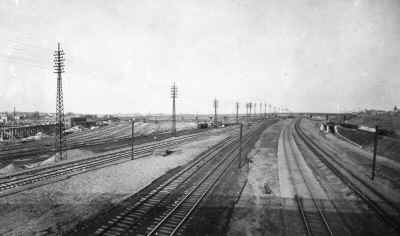
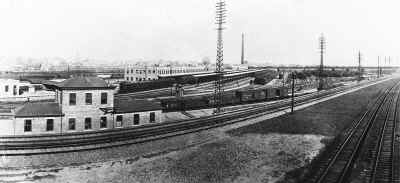
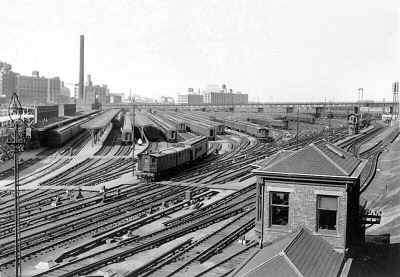
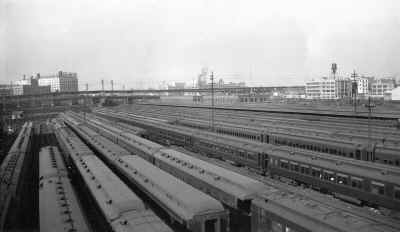
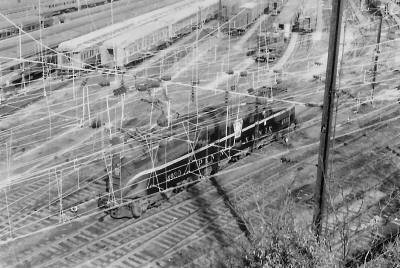
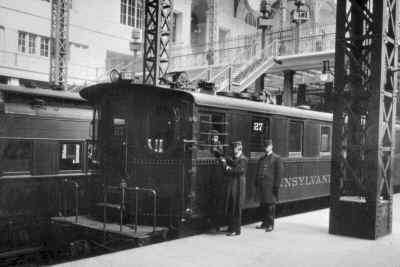
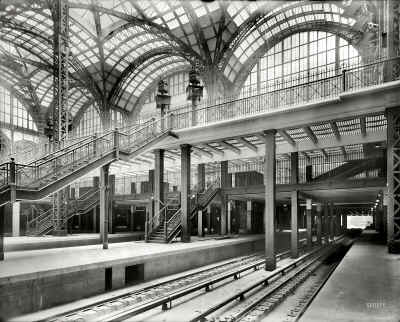
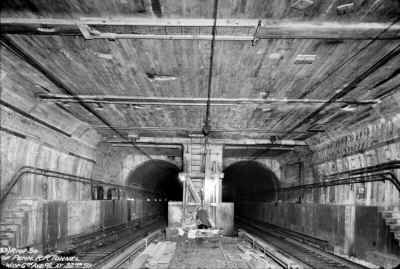
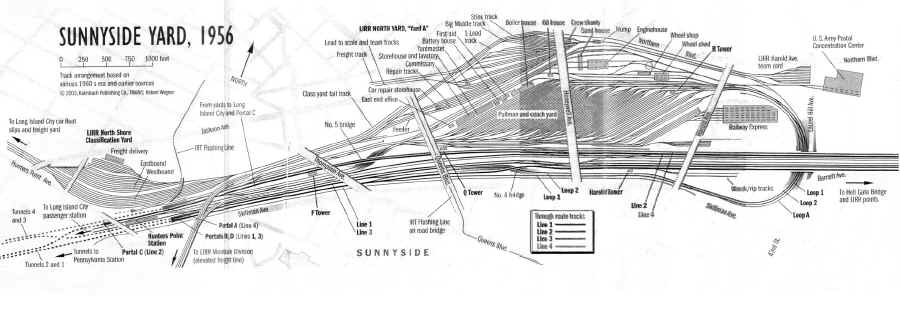

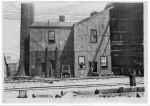
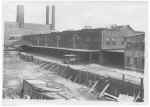
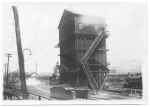
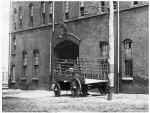
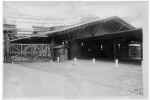
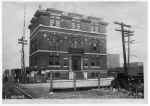
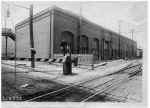
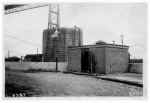
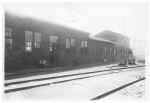
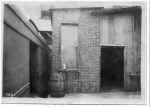
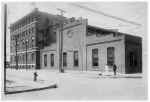
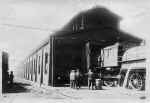
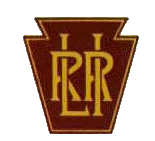
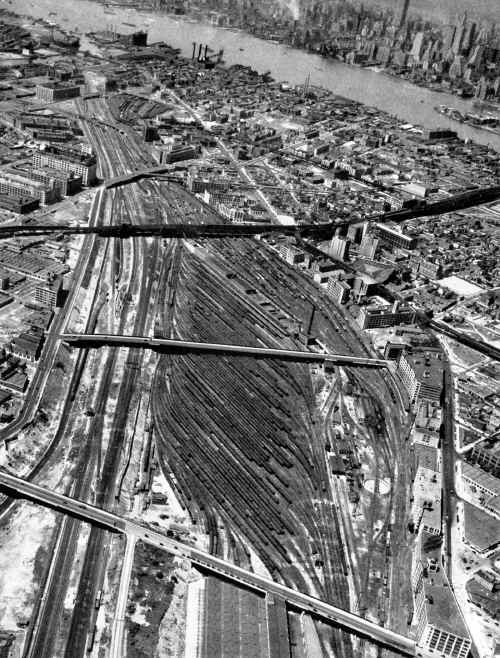
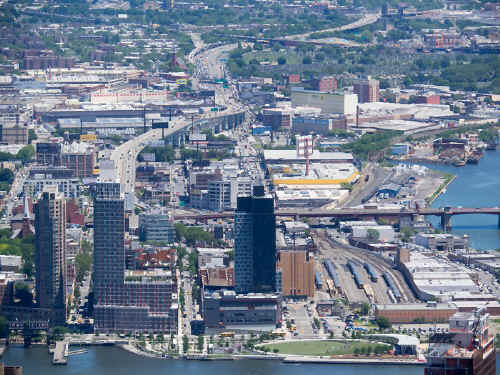
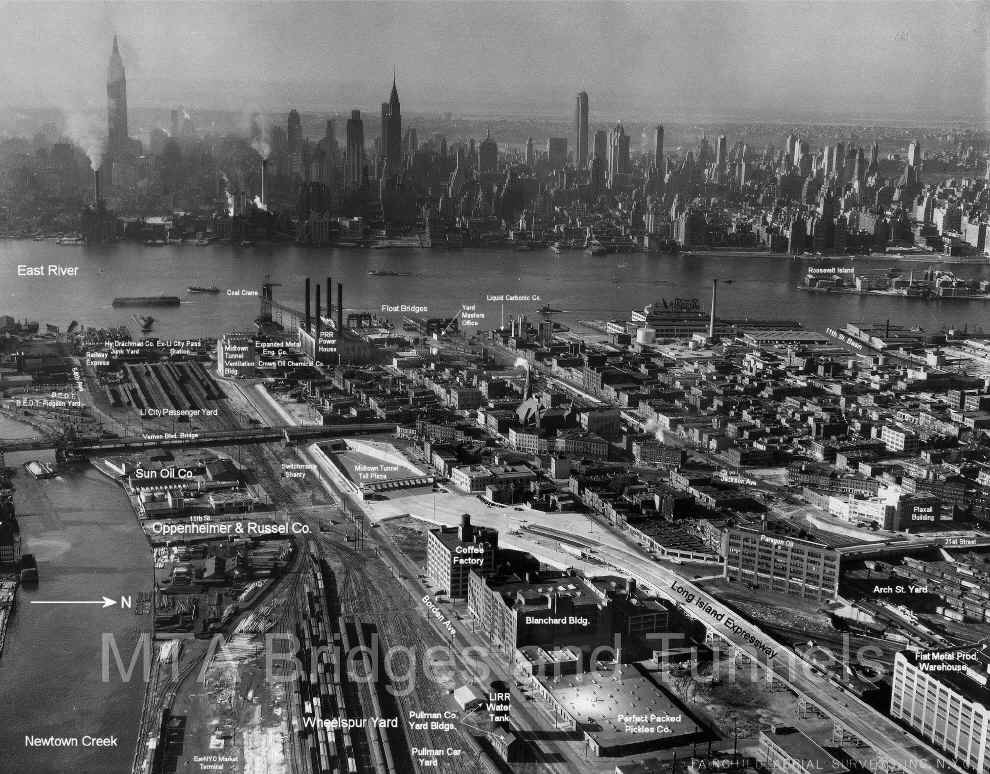
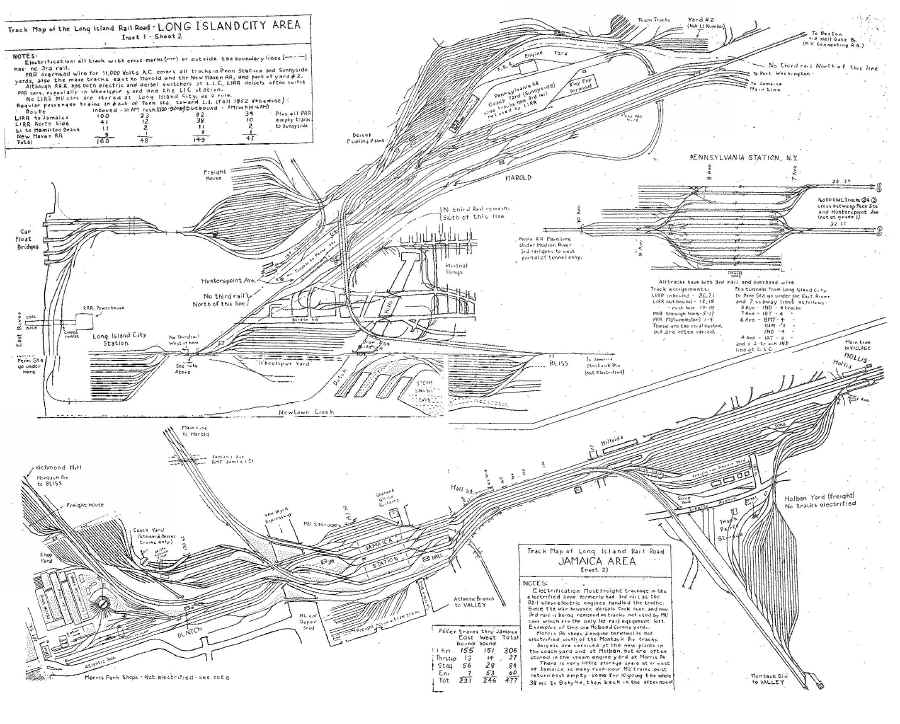


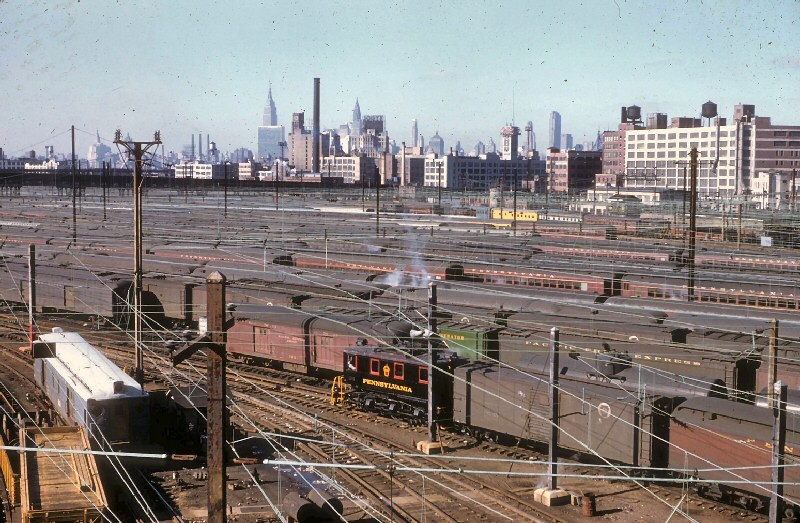
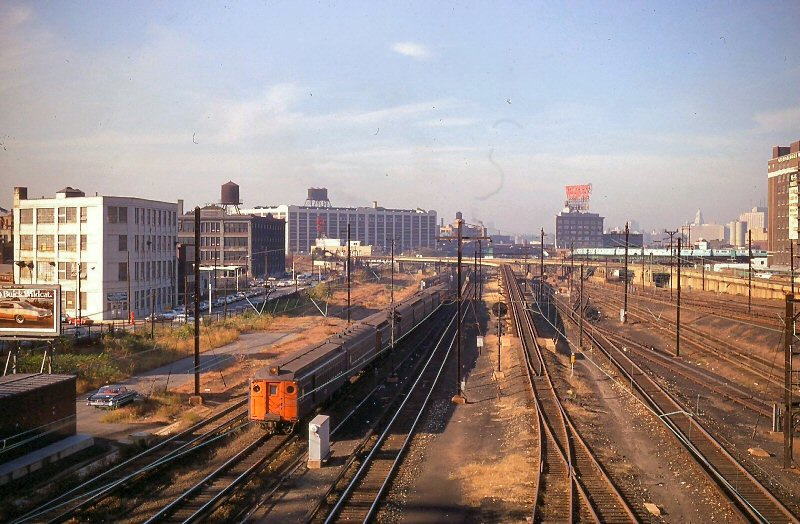


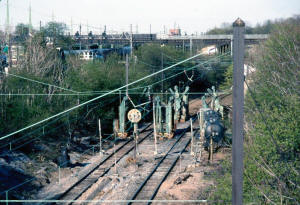
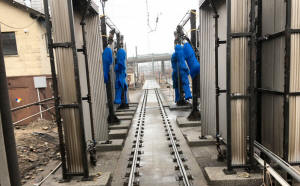
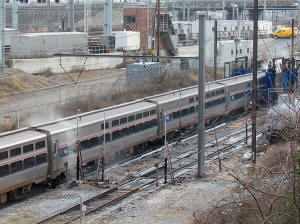
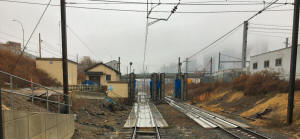
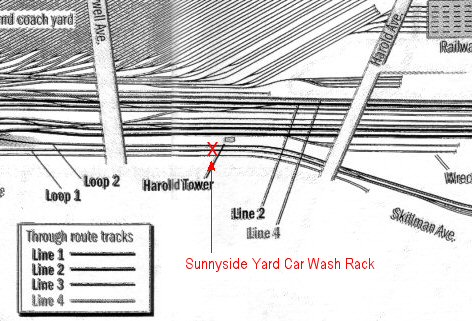

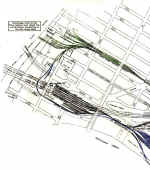
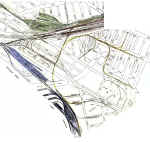
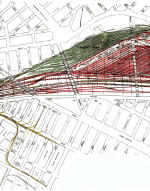
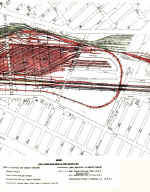
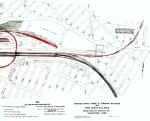

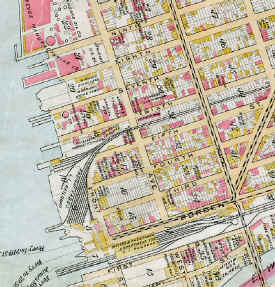
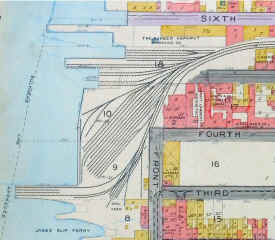
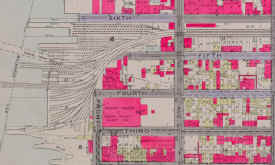
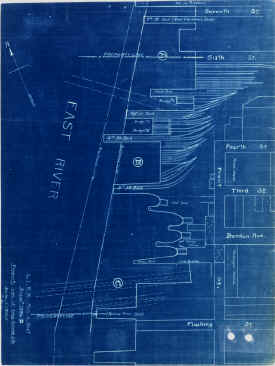
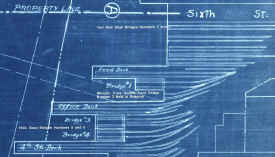

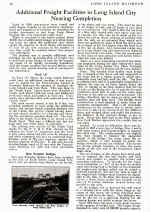
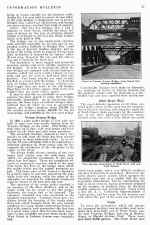
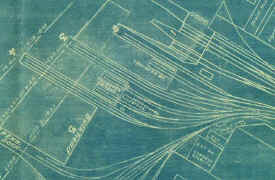
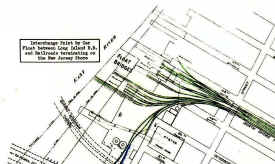
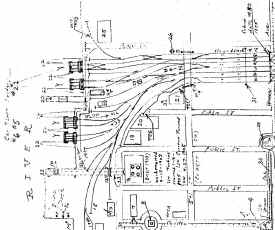
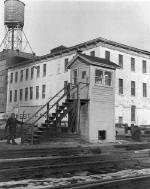

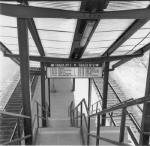

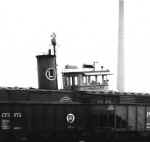
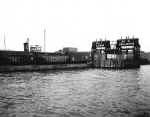

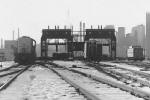


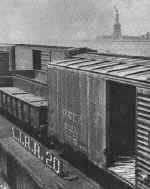
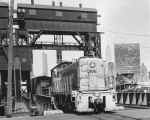

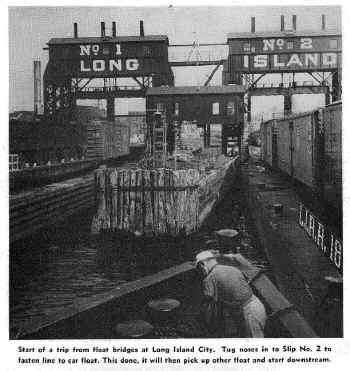
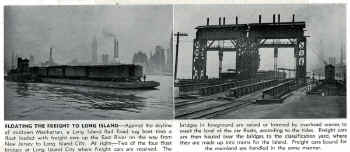
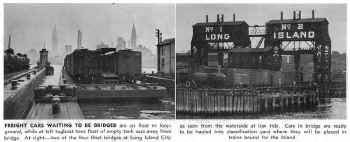
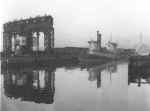
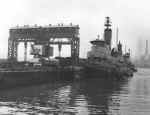
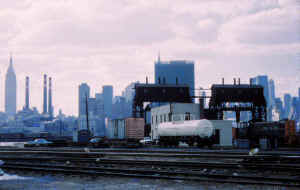
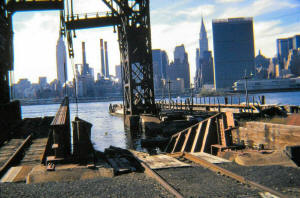
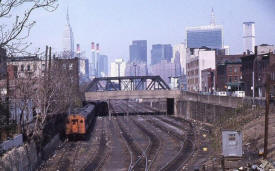

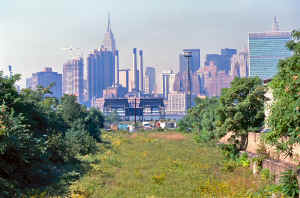
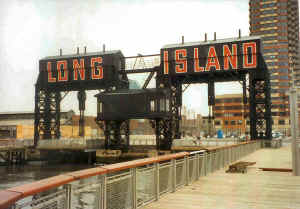




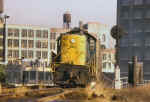
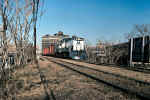
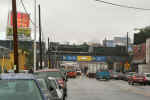

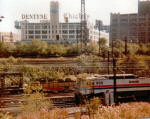
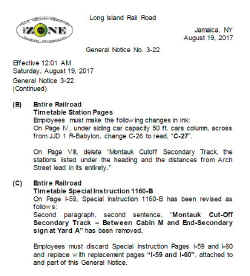

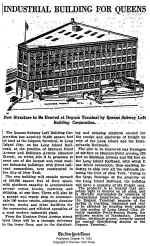
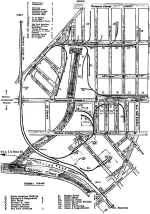
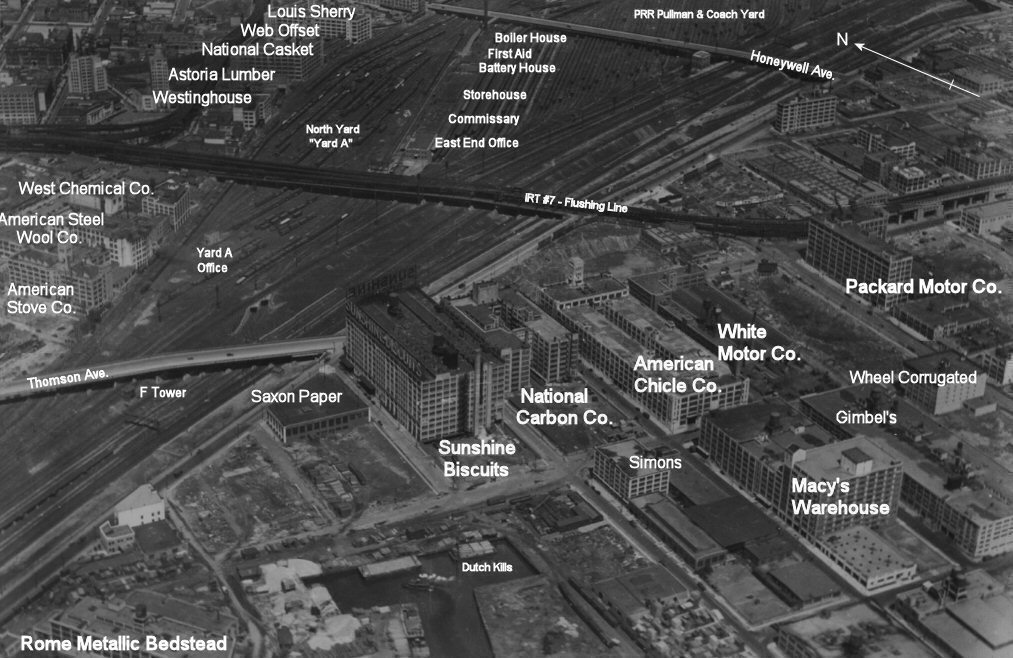
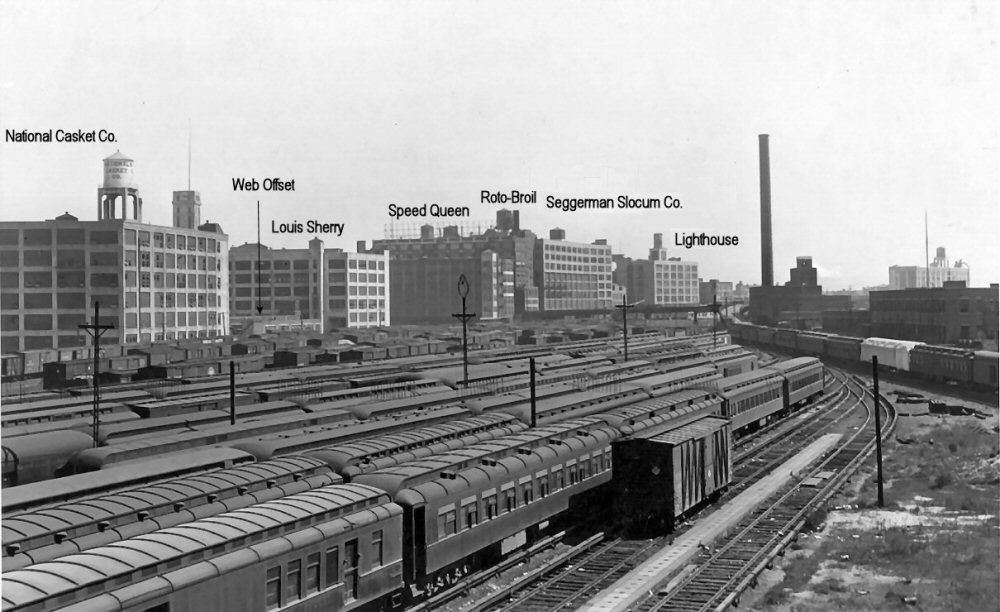
.jpg)
